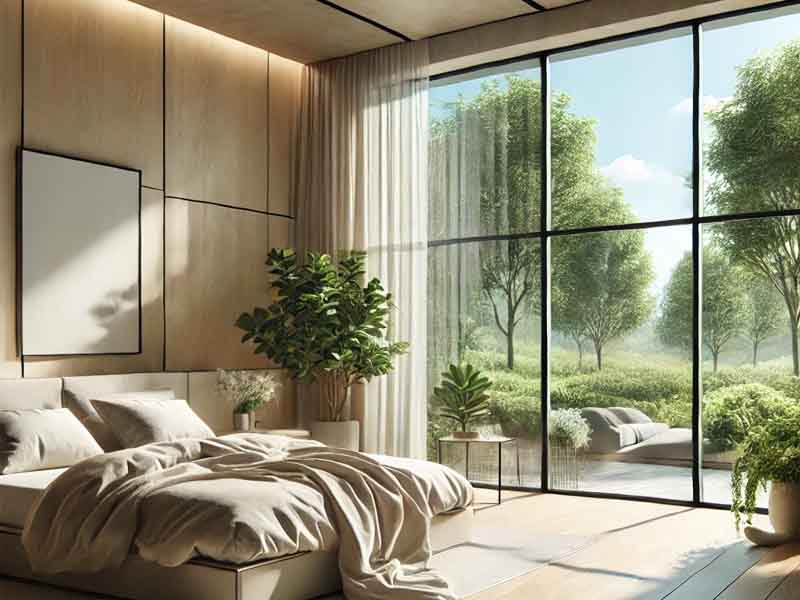
Elmsleep – Biophilic Design is transforming interior spaces by integrating natural elements to enhance well-being. This approach is gaining popularity as people seek to reconnect with nature in their homes and workplaces. Incorporating elements like indoor plants, natural light, and organic materials creates a calming atmosphere that promotes relaxation and reduces stress. Architects and interior designers are increasingly adopting Biophilic Design principles to make spaces more inviting, healthier, and environmentally friendly.
One of the key aspects of Biophilic Design is its ability to seamlessly blend indoor and outdoor environments. Floor-to-ceiling windows, indoor gardens, and water features help create an immersive natural experience. The use of earthy color palettes, textured surfaces, and sustainable materials further enhances this connection, making spaces feel more alive and organic. As urbanization increases, bringing nature indoors has become an essential design philosophy to counterbalance the stresses of city life.
Biophilic Design is not just about aesthetics; it significantly impacts mental and physical health. Studies show that exposure to natural elements indoors can lower stress levels, improve mood, and boost productivity. Features like large windows for ample sunlight, green walls, and wooden textures help mimic outdoor environments, fostering a sense of tranquility. Additionally, the presence of indoor plants enhances air quality by reducing pollutants, contributing to a healthier indoor environment. This makes Biophilic Design an essential aspect of modern sustainable living.
“Quick Commerce: The New Era of Instant Delivery”
Beyond improving mood and reducing stress, Biophilic Design has been linked to better cognitive function and increased creativity. Workspaces incorporating greenery and natural materials often report higher employee satisfaction and efficiency. In residential settings, bedrooms designed with Biophilic elements promote better sleep quality by regulating circadian rhythms through natural lighting. The psychological benefits of being surrounded by nature-inspired interiors highlight the profound impact of this design philosophy on human well-being.
Beyond its health benefits, Biophilic Design aligns with sustainability efforts by promoting eco-friendly materials and energy-efficient solutions. The use of reclaimed wood, bamboo, and recycled materials minimizes environmental impact while adding warmth and character to spaces. Smart design choices, such as maximizing natural ventilation and utilizing energy-efficient lighting, further enhance sustainability. As the world shifts towards greener lifestyles, Biophilic Design remains a timeless and adaptable concept that blends beauty, functionality, and environmental responsibility.
Sustainability and Biophilic go hand in hand, as both prioritize resource efficiency and environmental stewardship. Passive cooling techniques, such as strategic window placement and shading solutions, reduce the need for artificial climate control. Additionally, rainwater harvesting systems and green roofs contribute to ecological balance, making Biophilic interiors not only beautiful but also responsible choices for the future.
As people continue to seek harmonious living spaces, Biophilic stands out as a powerful solution that bridges the gap between nature and modern life. Its ability to improve well-being, enhance sustainability, and create aesthetically pleasing environments makes it an enduring trend in interior design. With growing awareness of climate change and the importance of mental wellness, the future of Biophilic looks brighter than ever, shaping how we live, work, and interact with our surroundings.
“More Than Time: The Ultimate Smartwatch Essential”
